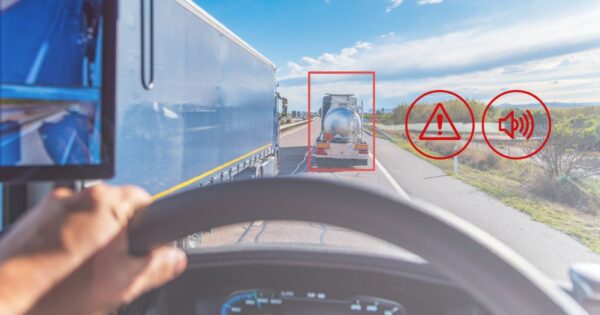We previously covered the Safe System approach and how it is empowering communities, cities, states and countries to move towards Vision Zero. Adding further momentum to this goal of a Vision of Zero road deaths and injuries in the US, the US government has announced the Safe Streets and Roads for All (SS4A) Grant Program.
A program allocating $5 billion in appropriated funds over the next 5 years, and in fiscal year 2022 (FY22), up to $1 billion will be available. Applications for funding are due by September 15, 2022, at 5:00 p.m. Eastern Daylight Time through Grants.Gov.
Who is eligible to apply for grant funding?
- Metropolitan planning organizations;
- Counties, cities, towns, and transit agencies or other special districts that are subdivisions of a State;
- Federally recognized Tribal governments; and
- Multijurisdictional groups comprised of the above entities.
How to apply – Application instructions
The US Department of Transport warn that you must complete the Grants.gov registration process before submitting the final application – a process taking between 2-4 weeks. Final applications are due September 15th, it’s imperative that if you wish to apply you start your registration process now.
To register on Grants.gov, applicants must:
- Obtain a Unique Entity Identifier (UEI) number;
- Register with the System for Award Management (SAM) at www.SAM.gov;
- Create a Grants.gov username and password; and
- The E-Business Point of Contact (POC) at your organization must respond to the registration email from Grants.gov and login at Grants.gov to authorize you as an Authorized Organization Representative (AOR). Please note that there can be more than one AOR for an organization.
To ensure you are eligible please ensure to check out the FAQ to check criteria.
What application type should you submit?
After you have registered with www.SAM.gov determine what type of application you need to submit:
Firstly, ask yourself the following:
Do you have an existing action plan covering related to any of the following:
- Vision Zero
- Tribal Transport Safety Plan
- Local Road Safety Plan
- Similar Safety Plan(s)
If your answer is NO:
- Apply for an Action Plan Grant
If your answer is YES:
Start by sense checking your existing plan to ensure it meets the following required criteria:
- Multimodal, systematic roadway safety analysis with mapping
- A list of projects and strategies identified in the plan
- Publicized or updated on or after 2017
With at minimum 4 of the following:
- Commitment to eliminate roadway fatalities and serious injuries, and a safety goal
- Task force responsible for Action Plan development, implementation, and monitoring
- Meaningfully engaged public, stakeholders, partner agencies
- Equity-centered process, analysis, and impact assessment
- Assessment of and approach to update existing plans, policies, guides
- Metrics to assess progress over time
If NO:
- Apply for an Action Plan Grant
If you meet the criteria:
- Are you ready to implement projects and strategies (with the potential for additional planning and analysis)
If YES:
- Apply for an Implementation Grant
If NO:
- Apply for an Action Plan Grant
The minimum and maximum funding possible through an Action Plan Grant
The Action Plan Grant is designated to fund the development, completion, or supplemental planning of safety action plans.
For Action Plan Grants, award amounts will be based on estimated costs, with an expected minimum of $200,000 for all applicants, an expected maximum of $1,000,000 for a political subdivision of a State or a federally recognized Tribal government.
A metropolitan planning organization (MPO) or a joint application comprised of a multijurisdictional group of entities that is regional in scope (e.g., a multijurisdictional group of counties, a council of governments and cities within the same region, etc.) can apply for an expected maximum of $5,000,000.
The Scope of the Action Plan Grant
To ensure the best likelihood of securing a grant, ensure your Action Plan clearly outlines the following criteria:
Leadership commitment and goal setting: that includes a goal timeline for eliminating roadway fatalities and serious injuries.
Planning structure: managed by a committee, task force, implementation group, or similar body to take oversight of the Action Plan development, implementation, and monitoring.
Safety analysis: examining existing conditions and historical trends that provides a baseline level of crashes involving fatalities and serious injuries.
Engagement and collaboration: ensure community representation and feedback through engaging with the public and relevant stakeholders, including the private sector and community groups.
Equity considerations: A plan developed using inclusive and representative processes.
Policy and process changes: Assess the current policies, plans, guidelines, and/or standards to identify opportunities to improve how processes prioritize transportation safety.
Strategy and project selections: that identify a comprehensive set of projects and strategies, that will address the safety problems described in the Action Plan.
Progress and transparency methods: Measure progress over time after an Action Plan is developed or updated, including outcome data.
The minimum and maximum funding possible through an Implementation Grant
The minimum award will be $5,000,000 and the maximum award will be $30,000,000 for political subdivisions of a State.
For federally recognized Tribal governments or applicants in rural areas, DOT expects the minimum award will be $3,000,000 and the maximum award will be $30,000,000.
For an MPO or a joint application comprised of a multijurisdictional group of entities that is regional in scope, the expected maximum award will be $50,000,000.
Implementation Grant example activities
Implementation Grants are to enact your Action Plan. Activities supported as part of the Implementation Grant include, but are not limited to:
- Implement left- and right-turn lanes at intersections, rumble strips, wider edge lines, high-friction surface treatments, road diets, and better signage along high-crash urban and rural corridors.
- Improving pedestrian crosswalks.
- Transforming a roadway corridor on a High-Injury Network into a Complete Street.
- Installing pedestrian safety enhancements.
- Community engagement to carry out quick-build street design changes informed by outreach and user input.
- Developing bikeway networks with bicycle lanes.
- Implementing traffic calming road design changes.
- Creating safe routes to school and public transit services.
- Promoting the adoption of innovative technologies or strategies to promote safety and protect vulnerable road users in high-traffic areas.
- Conducting education campaigns to accompany new or innovative infrastructure.
- Implementing standard and novel data collection and analysis technologies and strategies to better understand vulnerable road user (pedestrian/bicycle/transit rider) network gaps and to collect exposure data.
- Deploying advanced transportation technologies, such as the installation of connected intersection-based safety solutions and vehicle-to-infrastructure (V2I) advisory speed limit systems (e.g., Intelligent Speed Assistance [ISA]).
- Combating roadway departure crashes.
- Evaluating and improving the safety of intersections.
- Improving first responder services with improved crash data collection, formalizing street names and addressing, and enhancing emergency vehicle warning systems.
- Unifying and integrating safety data across jurisdictions.








